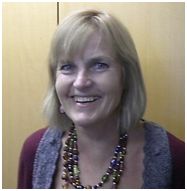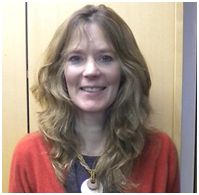Working with families of newly identified infants with hearing loss: 10 years on from Newborn hearing screening


Alsion Holmans and Alex Horlock
In May 2011 Oxfordshire celebrated 10 years of New Born Hearing Screening. All of the agencies involved came together to recognise the positive impact of the last decade of early detection of hearing impairment. In the ethos of partnership working professionals and parents shared and celebrated outcomes.
To ensure that there is a family focused approach parents are represented on the NHSP interagency group and involved strategically in the development of services across the agencies: health, education and social services.
Joint protocols have been developed with the Paediatric Audiology team; the Speech and Language Therapy Service and Social and Health Care, all of whom are working with deaf children and their families. The protocols define how the Early Years Teacher of the Deaf is introduced to the family and the ways in which joint working occurs throughout the early years and into the first educational setting.
The NHSP target is now for 95% of babies with congenital sensori-neural hearing loss to be identified by 4 weeks and 100% by 24 weeks of age. It was initially estimated that of the babies identified as having permanent congenital hearing loss 50% would have a moderate loss, 25% a severe hearing loss and 25% a profound hearing loss (Davis et al 1997, Fortnum and Davis, 1997).
Oxfordshire’s Accumulative Referral & Yield at 1.10.10
| Total babies screened | 68,923 |
|
65,002 3,921 |
| Total babies referred | 850 |
| Babies with Permanent Childhood Hearing Impairment | 107 |
|
77 27 3 |
Oxfordshire’s birth rate for the year 2011-2012
| Total babies screened | 86,947 |
|
81,996 4,951 |
| Total babies referred | 1,132 |
| Babies with Permanent Childhood Hearing Impairment | 138 |
|
91 42 5 |
However, there will still be the following vulnerable groups and vigilance is needed to ensure that these babies and children are identified.
Examples
- The children with ongoing conductive hearing losses who may well have an underlying mild/moderate sensori-neural hearing loss. It is this group of children for whom diagnostic confirmation has sometimes been delayed.
- The babies and children with late acquired hearing loss or who’s hearing may deteriorate.
- The children that miss the screening test, due to early exit from hospital and home birth.
- Special care babies from birth (NICU).
- Children with ongoing conductive hearing loss that need to be referred.
- Complex needs babies and children.
Davis (2001) aimed for educational support services ‘to begin an agreed habilitative programme with family and child as soon as possible after confirmation of permanent congenital hearing loss’. This good practice is built into the Protocols established with all agencies involved.
At conformation of hearing loss the Paediatric Audiologist will ask the family if they would like involvement from an Early Years Teacher of the Deaf. Most families agree to this and the Paediatric Audiologist then makes contact with the Early Years lead and information is shared. A written referral is also forwarded within 24 hours of this notification, in line with the National NHSP Early Support protocols. Contact with the family is made and a support visit is arranged at a convenient time for mother, baby and other supportive and interested family members or friends.
The Service supports any child with an identified hearing loss. Families with infants identified with monaural loss are offered visits in the same way as infants with bilateral loss . Contact and a home visit is provided within the same timescales. Parents value the opportunity to talk again about the implications of monaural loss. They often have questions they hadn’t thought of or felt unable to ask in the clinic situation or may want to be put in touch with another family.
The first home visit is very much led by the family in terms of timing, venue and the information discussed. Some families have requested a home visit as soon as this can be arranged, whilst others have preferred to wait until the next Audiology appointment (usually within a week of confirmation). Teachers of the Deaf working with families arrange their time flexibly to be able to provide visits in the early days after identification in the evenings and with occasional early morning or weekend visits, so that both parents can be present. This needs recognition by Senior Managers in terms of the need for flexible working patterns.
It is recognised that parents will have many decisions to make and the service supports to ensure these can be informed choices. Communication approach is an example of this and the different approaches available are discussed from an early age with a choice of communication methods offered.
First visits are an opportunity for parents to ask the questions that are most important to them at the time. Follow up visits are offered at a pace and time to suit the family. Flexibility to respond to changing need is essential.
A folder is given to new families with some initial information leaflets.
- Oxfordshire Service leaflet – (briefly outlining the ToD role)
- More personalised information about the baby’s hearing loss, ear impression taking, hearing aid care and management with an emphasis on positive interactive care.
- A contents list for the Family Pack available from the Service. As there is a considerable amount of information available it is generally not given as a complete pack. Parents can look through the contents list to pull out the topics that they feel they would most like information on initially.
- Family support group leaflet and programme for the term.
- Local Oxfordshire Deaf Children’s Society contact leaflet and the Social and Health Care contact leaflet.
- A copy of any ENT assessments and accompanying handouts for the Teacher of the Deaf to use in interpreting these.
- Any additional equipment needed e.g batteries, puffer, stetoclip, toupe tape.
- A leaflet prepared by parents about what to ask at hospital audiology appointments (Being Prepared for Hospital Clinic Appointments and Understanding What They Are For)
Areas of discussion during family led early home visits will often include:
- understanding and interpreting results
- consideration of communication approaches
- amplification aids and management
- monitoring baby responses
- links to other families of deaf children
- information on local and national voluntary groups
- links with other professionals involved with the family (a joint visit with the health visitor early on can be very helpful)
- developing early listening skills
- facilitating good communication and interaction
- benefits such as the Disability Living Allowance available to families of deaf children.
For our own records an initial planning document tracks actions and timescales within the first twelve weeks post referral.
It includes:
- initial contact
- first visit/ report written and distributed
- health visitor contact
- provision of an initial information pack
- links made with other families
- links made with the Family Support Group
- parent pack information given
- links made with other professionals
- Social & Health care information
- Local Deaf Children’s Society and National Deaf Children’s Society leaflet
- support given with respect to information about benefits
- introduction to the Monitoring Protocol.
A second tracking sheet ensures that a record is kept of information requested by the family or provided by the Teacher of the Deaf. The service has adapted to the needs of individual families, in response to NHSP and early identification in the following ways.
- An increase in Teachers of the Deaf working in the Early Years
- Teachers of the Deaf attending training with a focus in Early Years including, Early Support training such as Working in Partnership, Monitoring Protocol for Deaf Babies and Children and Key Worker training, as well as training in the early years foundation stage and CAF /TAC, training
- Early Years distance learning training
- Training in the Early Years modules for the PG Diploma (Early Years and Deafness)
- 52 week cover
- Teachers training to take earmould impressions so that these can be taken in the home
- Development of a seamless service to families with effective multi-agency working
- Multi-sensory impairment teacher and intervener posts to meet the increasing needs of families with babies and children with need for a sensory programme
- Early audiological management
- Family support/counselling
- Ear mould impression taking and otoscopy training.
The support available to families helps to ensure that positive relationships are established early on. Feedback from questionnaires completed by the families on all the services they receive informs continuous service development. The ethos of ‘family focused support’ Early Support underpins everything we do. The Monitoring Protocol is a vehicle for this as the ‘discussion’ involved in the sharing process of the protocol is fundamental to supporting the family’s understanding of their child’s progress and development.
The Monitoring Protocol allows development to be tracked for 0-3 year olds in a range of developmental areas including:
- listening, attending and vocalisation
- communication/pragmatics
- play
- social and emotional development
- other developmental milestones.
Parents are generally made aware of the Monitoring Protocol very early on. They start to use it with the Teacher of the Deaf’s support if, and when, they feel ready to do so. It is used by the family with the support of the Teacher of the Deaf to inform their ongoing decision making.
The Monitoring Protocol is held by families and is very effective in empowering families to lead and engage the support they receive and need. It helps them to understand and recognise the effectiveness and possible need for changes in the audiological equipment their child uses. With families monitoring and managing equipment on a day to day basis, adaptations and changes can be made quickly and effectively to meet need. It also encourages the family to question and reflect on their day to day interaction and to look ahead towards the next steps positively.
Families manage the Monitoring Protocol in different ways.
- Some like to share it first with their partner or others involved and then discuss with the Teacher of the Deaf (anecdotes; examples and next steps are highlighted)
- Some like to talk while the Teacher of the Deaf annotates on the page. (There is always agreement as to what is recorded.)
- Frequently it takes more than one session to complete, because of the discussion that takes place. However this is seen as part of its value by both parties and it becomes a celebration of development and progress, as well as an understanding of the way forward for the family.
Parents have said it is most useful when completed in partnership with the Teacher of the Deaf, who can highlight and direct the family to helpful pointers and make the Monitoring Protocol the family’s own. It ensures joint focus with professionals and for this reason most families take the Monitoring Protocol with them to Audiology, Paediatric and Speech and Language therapy clinics.
Key stages in the baby’s development trigger the need to consider more detailed support for the child’s development. This is when the accompanying Level 2 materials supplement the Monitoring Protocol.
The detail in the Stage 2 materials supports need, identifies progress and offers ideas to move development on, helping families to understand further strategies and to value their own input. It also explains when and why interventions need to take place. The strategies are designed to support and develop behaviours that foster effective communication. Over time the use of these materials becomes pivotal in helping families to value their role and to help alert them to changes in their child’s development and need.
This is also where the Family Service Plan comes in. It is usually reviewed and put together following the shared discussion of the Monitoring Protocol outcomes.
The Family Service Plan is framed as questions to the family. It sets out the type and level of support the family would like; who is doing what and where and how the support will be given. It is comprised of three child centred ‘next steps’, the goals that the family have in the longer and shorter term for their child and themselves. Other professionals’ input is invited by the family ensuring an agreed focus by all involved. Copies are provided to all involved with the infant with the permission of the family. Wherever possible meetings to review the Family Service Plan are arranged so that key people can be present.
Along with the Family Service Plan personalised/family focused routines and activities are included with use made of the ‘Fridge cards’. These ‘ideas’ for activities are again family focused and build on what is already happening in the home. As the child moves into the Early Years setting the Family Service Plan will inform the IEP targets, should they be required.
A longitudinal video record is also kept.
Helping families to explore options and supporting their access to balanced information has also been fundamental from the outset. Families have differed in terms of how much information they have wanted and how soon. Information often needs to be given and revisited in a sensitive way. It may be that as the child’s development is monitored additional needs become more apparent needing further investigation and specialist involvement, for example, Auditory Neuropathy, CMV, Autism, Ushers. In time it may be another professional should become lead professional and we aim to ensure a seamless transfer to another specialist professional.
Ongoing liaison between Health and Education professionals is fundamental. Parents want to know that all professionals are working together consistently to provide optimum support.
Information sharing will include: family’s reaction to and understanding of identification, audiological assessments, implications of additional needs, management of equipment, aetiological information, long term outcomes, good practice, educational support, earmould impression taking (these are taken weekly, because of the rate at which the infant grows. They are then set off to a priority turn around Laboratory.)
Essential to the Teacher of the Deaf support role in the early months, is the verification of the prescribed hearing aid/s. Behavioural observations are discussed with the family ensuring confirmation of appropriate aid settings. Such observations inform and support the clinic assessment so adjustments can be made at recurring appointments.
For some very young babies the investigation towards appropriateness of Cochlear Implants or BAHA has to be considered early. Their progress and response to their initial equipment is closely monitored. Assessments (MRI, CT) and ongoing discussions ensure a time managed plan towards Cochlear Implantation. The process involves discussions, meetings, scans and assessments and support to prepare families in readiness for the operation.
Joint feedback has influenced protocols for screening. For example, as a result of imperfect BSER responses in premature babies these babies are not screened until they reach ‘full term’ age. Such adjustments are recognised in the way we interpret and monitor the baby’s development with families.
An increased number of babies with CMV are being identified earlier now that there is a simple urine test that is given routinely to all positively identified screened babies. Medication can now be given to control potential deterioration of hearing.
An Oxfordshire parent in conjunction with the Paediatrician has produced an information sheet about the CMV screen, to help parents to understand the process and its implications.
Good fitting earmoulds are essential to hearing aid management. Regular mould impressions are taken by the Early Years Teachers of the Deaf in the home on their routine visits. In the first few weeks and sometimes months, these are taken weekly because of the rate at which the infants have grown. They are sent off to a priority turn around laboratory.
Equally hearing aid management can be difficult in the early years.
- Taking a good impression
- Keeping aids on tiny soft ears
- Keeping on and management in daily routines
- Baby removing aids
- Safety when aids taken to mouth
- Getting parents confident with equipment.
Families also need information, support and encouragement to be confident in their skills in communicating and interacting with their babies. Caregivers naturally interact in a way that facilitates good communication. We must be careful to reinforce to families how skilled they are at doing this so that families enjoy their infants and good natural communication occurs in all the routine situations – feeding, changing, bathing etc. Small babies are tuned into faces, body language and tuneful intonated voices. We need to acknowledge to parents their success with positive comments. Video can be a really helpful tool but again must be used sensitively to help families to value the progress that is being made as their baby develops.
The Teacher of the Deaf has often taken on some aspects of the role of key worker / lead professional in terms of bringing other professionals working with the child together in the home and in co-ordinating the sharing of information. This can extend to participating or leading a Common Assessment Framework (CAF) or Early Years Team Around the Child (TAC) meeting.
A Family Support Group is offered on a fortnightly basis and provides a good opportunity for introducing other families and the parents of older children. Young deaf people and adults also contribute. Professionals who may not be immediately involved with the family will visit to discuss their role. There are a wide range of topics covered and the programme for each term is family led.
In terms of planning for and providing cover during school holiday periods staff have volunteered to work on a rota basis. An Early Years Teacher of the Deaf working across the Service covers each week. A day in lieu is given for each week ‘on call’ regardless of whether visits are made. Additional time in lieu is given for any time worked. The time in lieu can be taken flexibly in agreement with the Team line manager.
Oxfordshire has aimed to respond to the DfES/RNID view: ‘families must be at the heart of any decision making process about their child and need accurate, accessible, up to date information to support their understanding of how to respond positively to deafness in their child and to decide what to do’.
An NHSP working group has been meeting regularly to plan for, implement and review procedures, protocols and policy between the Services involved. Joint training has been arranged between agencies around areas such as Breaking Bad News; Family Service Plans; supporting families with MSI/complex needs infants; shared presentations with roles and responsibilities of involved services from screening through initial identification, family and support in educational settings; Families discussing their experiences with the professionals involved.
Most recently as NHSP had been going for 10 years a celebration presentation event took place with individual presentations for all the agencies involved, leading to a presentation of video snapshots of children talking and communicating.
The NHSP working group comprises:
- parents
- the Consultant Community Paediatrician leading on NHSP
- Paediatric Audiologists
- the NHSP Project Co-ordinator (leading the screening technicians)
- Lead in Early Years (Hearing Support Service)
- Health Visitor facilitator
- Speech and Language Therapist (Hearing Impairment)
- Social and Health Care.
The impact of numbers of professionals involved in the Early Years led the parents at the Family Support Group to put together some manageable guidelines – ‘Being prepared for Hospital appointments and understanding what they are for’. Within the pages parents are helped to understand how to prepare for the clinic; what they might bring with them; what questions to ask and what they might access from the clinic.
The support for families of early identified deaf infants in Oxfordshire continues to be informed by national initiatives such as Early Support; Working in Partnership training; Service Audit Tool- (Jointly shared and discussed with the NHSP working group). Staff are just signing up for the new round of regional Early Support training for trainers.
Yearly parent questionnaires with feedback from NHSP families with identified hearing impaired babies and the NHSP Quality Assurance Programme ensures that review take place and standards are maintained within the Support Services (Health, Education and Social and Health care). Parent representation provides opportunities for families to have a voice and influence good practice. Support is continuously evolving as new guidance is made available. The mechanisms in place that encourage effective multi-agency working with parental involvement and influence are key in informing future practice in this area.
So what has been the role of the Teacher of the Deaf? From experiences to date is has been primarily about listening to families and staying with their concerns and needs. It has sometimes been a shared learning curve.
Bibliography and useful resources
| Fortnum H and Davis A (1997) | A Critical Review of the role of Neonatal Hearing Screening in the Detection of Congenital Hearing Impairment, | British Journal of Audiology 31, 409-446 |
| Davis et al (1997) | Epidemiology of Permanent Child Hearing Impairment in the Trent Region 1985-1993 | Health Technology Assessment |
| Yoshinaga-Itano C (2000) | Successful Outcomes for Deaf and Hard of Hearing Children with Hearing Loss. | Seminars in Hearing Volume 21 No.4 |
| RNID (2001) | Effective Early Intervention for Deaf Children 0-3 and their Families. | RNID |
| Lynne Murray and Liz Andrews (2000) | The Social Baby: Understanding Babies’ Communication from Birth | CP Publishing |
| Dr Sally Ward (2004) | Baby Talk | Arrow |
| Professor Annette Karmiloff-Smith | Baby it’s You DVD | Trafalgar Square |
| I Can (2007) | Chatter Matters | www.ican.org.uk |
Articles
DfES publications Early Years education and childcare
Practical and Guidance working documents within the ethos of Early SupportThese will be found under Early support National Children’s Bureau and are all being updated (Feb 2013).
Visit the National Children’s Bureau website
- Early Support and You (July 2006) Ref: ES 40
- Information for Parents-Deafness (March 2007) Ref: ES 11
- Early Support: Family Pack (April 2007) Ref: ES 1 Family File and how to use the Family File Ref: ESKIT 1 (March 2007)
- Monitoring Protocol for Deaf Babies and Children, Level 2 Materials (June 2006) Ref: ES 31
- How to use the Protocol (June 2006) Ref: Ref: ES 29
- Monitoring Protocol for Deaf Babies and Children: Developmental Cards (June 2006) Ref: ES 32
- Developmental Journal (April 2008) Ref: ES 54
- MAPIT : Multiagency Planning and Improvement Tool (supersedes Service Audit Tool)
- Surestart: Together from the Start Practical Guidance for Professionals Working with Disabled Children (May 2003)
- NDCS (2002) Quality Standards in the Early Years: Guidelines on Working with Deaf Children Under 2 years old and their Families. Cochlear implants (2010)
- Communication Trust: Publications and resources from the year of Communication
- Universally Speaking, Ages and Stages of Communication from Birth to 5. (See other resources for listening/talking /communication)
- Hand-out prepared by parents of hearing-impaired children in Oxfordshire (2012) ‘Being Prepared for Hospital Clinic Appointments and Understanding What They Are For’.




